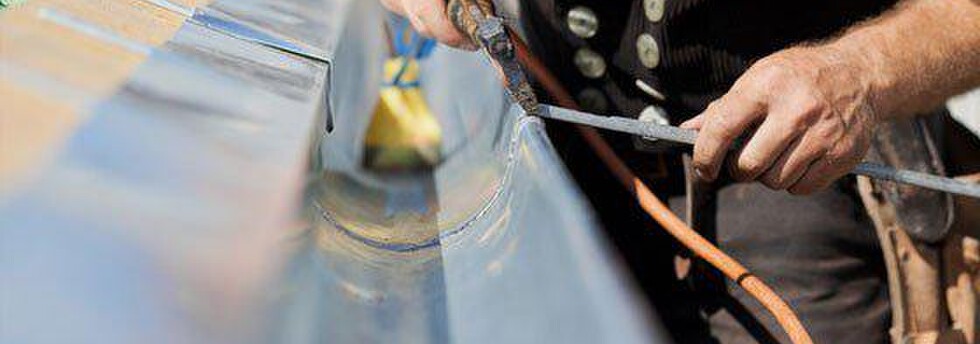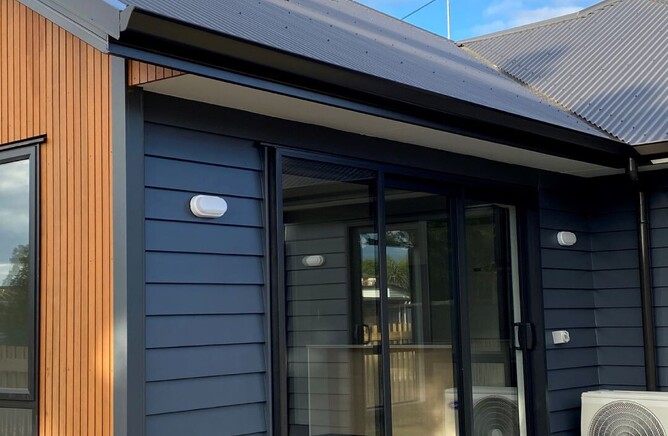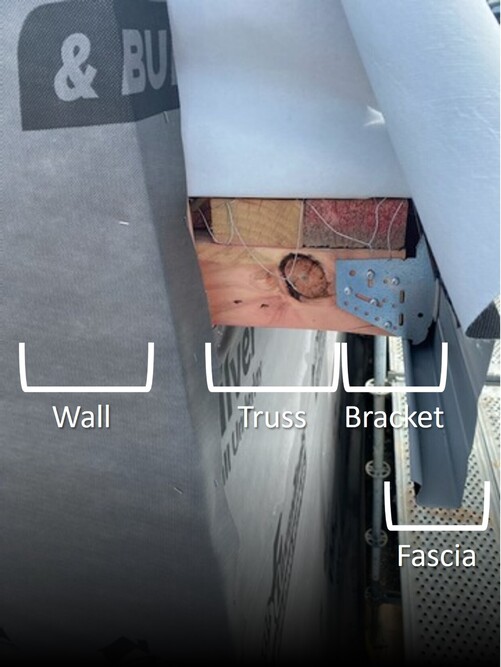What is the Fascia?
Fascia plays a crucial role in protecting your home from the elements and maintaining its structural integrity.
This guide by our expert team at Fineline will help you understand the importance of fascia for your Hamilton home, how to recognise signs that it may need repair or replacement, and what steps you can take to keep it in top condition.
Melissa, a homeowner in Hamilton, noticed her gutters were sagging and pulling away from the roof. Upon inspection, she discovered that the fascia boards were rotting and needed replacement. After consulting with a professional, she learned that the damage was likely due to water infiltration and could lead to more severe issues if not addressed promptly. Melissa decided to have the fascia replaced, and her home is now protected against further damage.
What is Fascia?
Fascia is a crucial element of your home's exterior. It runs along the edge of your roof overhang and is the attachment point for your gutters, supporting them and providing a clean, finished look.
Functionality and Importance
Functionally, fascia plays a critical role in supporting your home's gutters, especially during heavy rain, by bearing the weight of the water and ensuring proper drainage. It also provides support against wind, ice, and snow, helping to maintain the integrity of your roof's edge.
Weatherproofing and Energy Efficiency
One of the most essential functions of fascia is weatherproofing. By sealing the gaps and cracks in your home's exterior, fascia helps prevent water from penetrating your ceiling and walls, protecting your home from water damage, mould, and rot.
Moreover, fascia can improve your home's energy efficiency by sealing gaps and cracks, helping to keep warm air inside during the winter and cool air inside during the summer, ultimately saving you money on your energy bills.
What is the Fascia made of?
Historically, fascia in New Zealand has been made from treated and pre-painted pine boards. However, newer materials like protected and painted steel, offered by companies like us at Fine Line, are becoming increasingly popular due to their durability and longevity.
Steel Fascia: A Durable Choice
Steel fascia is highly durable and comes with an outstanding warranty on both the paint finish and protection against perforations and rust. As an example of the quality of these products, the following describes ColorCote's paint and protection:
Substrate
Hot-dipped zinc/aluminium/magnesium alloy coated steel coil.
Pre-treatment
Corrosion-resistant conversion coating.
Primer
Flexible corrosion-resistant primer. The nominal film thickness is 7µ on the top side and 5µ on the reverse.
Finish Coat
Flexible exterior acrylic, polyester or modified polyester coating. Nominal film thickness 18µ.
Backing Coat
Shadow Grey (standard colour) wash coat, 5µ nominal thickness.
ColorCote says that the superior corrosion resistance of MagnaFlow means it is an ideal choice for more demanding environments, such as roofs 100m from the coastline. The magnesium in the aluminium/zinc/magnesium alloy coating 'magically' helps zinc flow over cut edges, sealing them and providing long-term protection against corrosion.
Fascia is a crucial component of your home's exterior, providing both functional and aesthetic benefits. Upgrading to high-quality, durable materials like steel can enhance the longevity and performance of your fascia, ultimately protecting your home and saving you money in the long run.
Steel fascia have steel brackets that fix to the truss tails, and then the fascia clips onto the brackets (See picture).
Fascia vs. Barge Boards: Understanding the Difference
Fascia and barge boards are both important components of your home's exterior. Still, they serve different purposes and are located in different roof areas.
Fascia
Fascia is located along the lower edge of the roof, running horizontally. It serves as the point of attachment for the gutters and provides a finished look to the roof's edge. Fascia also helps to support the lower edge of the roof tiles or roofing material.
Barge Boards
Barge boards, on the other hand, are located along the gable ends of the roof, running vertically from the eaves to the ridge. They are typically decorative in nature, adding visual interest to the gable ends of the roof. Barge boards also help to protect the exposed ends of the roof timbers from the elements.
Key Differences
Location: The fascia is along the roof's lower edge, while the barge boards are along the gable ends.
Function: Fascia serves as the point of attachment for the gutters and provides support for the lower edge of the roof, while barge boards are primarily decorative and help to protect the exposed ends of the roof timbers.
Appearance: Fascia is typically a horizontal board that runs along the roof's edge, while barge boards are vertical boards that run along the gable ends of the roof and often feature decorative elements.
While both fascia and barge boards are important components of your home's exterior, they serve different purposes and are located in different areas of the roof. Understanding the difference between the two can help you better maintain and care for your home's exterior.
Signs Your Fascia May Need Repair or Replacement
Fascia is an integral part of your home's exterior, and it's crucial to keep an eye out for signs that it may need repair or replacement. Here are some common indicators that your fascia may need attention:
Visible Damage
Rotting or Decay: If you notice any areas of your fascia that appear to be rotting or decaying, it's a sign that moisture has infiltrated the wood. This can weaken the fascia and compromise its ability to support your gutters.
Cracks or Splits: Cracks or splits in the fascia can allow water to seep in, leading to further damage and potential structural issues.
Peeling Paint or Discoloration
Peeling or Bubbling Paint: Peeling or bubbling paint on your fascia can indicate moisture damage. This may be a sign that your fascia is no longer protecting your home as it should.
Discolouration: Discoloration of the fascia, such as dark spots or patches, can also signify moisture damage or rot.
Sagging Gutters
Gutters Pulling Away: If your gutters are pulling away from the fascia or sagging, it could be a sign that the fascia is no longer providing adequate support. This can lead to improper drainage and water damage to your home's exterior.
Pest Infestation
Visible Pest Activity: Insects and pests, such as termites, carpenter ants, or birds, may be attracted to damaged fascia. If you notice signs of pest activity, it's important to address the issue promptly to prevent further damage.
Increased Energy Bills
Drafts or Air Leaks: Damaged fascia can allow drafts or air leaks to enter your home, reducing its energy efficiency. If you notice a significant increase in your energy bills, it may be due to compromised fascia.
Visible Mould or Mildew
Mould or Mildew Growth: Moisture damage to the fascia can lead to mould or mildew growth. If you notice any signs of mould or mildew on your fascia, addressing the issue promptly is essential to prevent health risks and further damage.
If you notice any of these signs, it's important to have your fascia inspected by a professional.
At The End Of The Day
Fascia is a crucial component of your home's exterior, providing both functional and aesthetic benefits. It plays a critical role in protecting your home from the elements, supporting your gutters, and maintaining the integrity of your roof's edge. Understanding the importance of fascia and recognising signs that it may need repair or replacement is essential for keeping your home's structural integrity and protecting it from costly damage.
By upgrading to high-quality, durable materials like steel, you can enhance the longevity and performance of your fascia, ultimately protecting your home and saving you money in the long run. Suppose you notice any signs that your fascia may need attention, such as visible damage, peeling paint, or sagging gutters. In that case, it's important to have it inspected by a professional.
Our team at Fine Line is here to help you keep your fascia in top condition, ensuring that your home remains safe, secure, and beautiful for years to come.
Talk to our expert team at Fineline now
Quotes/Enquires
Janine 021 124 4972
Operations Manager/Director
Justin 021 385 569
Email Us
janine@fineline.nz









